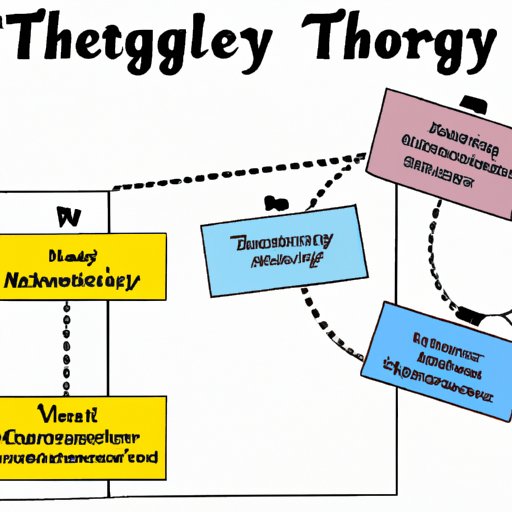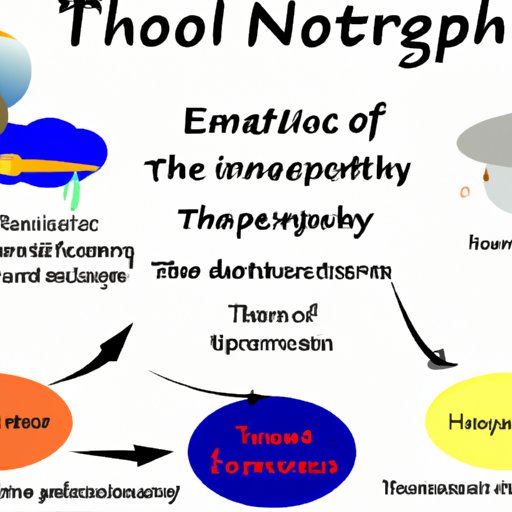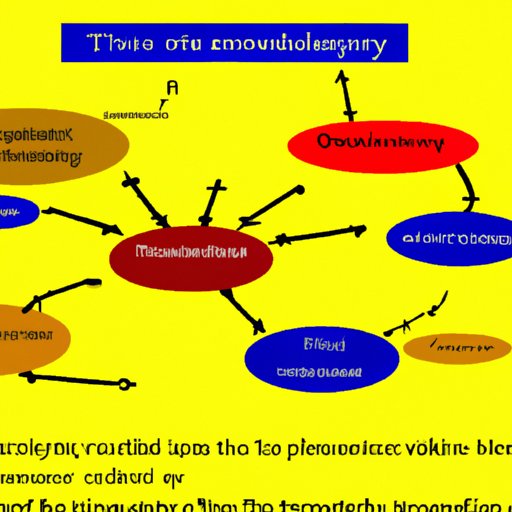Introduction
Theories are an integral part of the scientific process. They provide a framework for understanding the world and exploring its mysteries. But what exactly is a theory? In essence, a theory is an explanation for why something occurs. It’s a hypothesis that has been tested and refined over time. This article will explore the different types of theories in science, how to understand them, their history and development, and their impact on scientific progress.

Exploring the Different Types of Theories in Science
Theories come in many forms and can be found across all branches of science. Some of the most common types of theories include physical theories, biological theories, and social theories.
Physical Theories
Physical theories explain the behavior of matter and energy. Examples of physical theories include Newton’s law of gravity, Einstein’s theory of relativity, and quantum mechanics. These theories help scientists explain phenomena such as the motion of planets in the solar system, the bending of light, and the behavior of particles at the atomic level.
Biological Theories
Biological theories explain the behavior of living organisms. Examples of biological theories include Darwin’s theory of evolution and Mendel’s laws of inheritance. These theories help scientists explain phenomena such as the origin of species, the inheritance of traits, and the development of organisms over time.
Social Theories
Social theories explain the behavior of people and societies. Examples of social theories include Freud’s psychoanalytic theory and Marx’s theory of class struggle. These theories help scientists explain phenomena such as personality development, economic inequality, and social change.
A Comprehensive Guide to Understanding Scientific Theory
In order to truly understand scientific theories, it’s important to look at the components of a theory and how they come together to form a cohesive whole. It’s also important to understand the process of formulating, testing, and refining a theory.
Components of a Theory
At its core, a theory consists of two essential components: hypotheses and evidence. Hypotheses are educated guesses about how the world works. Evidence is data that is collected through observation and experimentation. When combined, these two components form the basis of a theory.
Formulating a Theory
Once hypotheses and evidence have been gathered, the next step is to formulate the theory. This involves taking the hypotheses and evidence and weaving them together into a cohesive whole. This process requires careful consideration of the data and creative thinking in order to make meaningful connections between the hypotheses and evidence.
Testing and Refining a Theory
Once a theory has been formulated, it must be tested and refined in order to determine its validity. This involves collecting additional data and analyzing it in light of the existing theory. If the data supports the theory, then it is considered valid. If the data does not support the theory, then it must be revised or discarded.
Examining the History and Development of Theories in Science
Theories have been around since ancient times. Ancient Greek philosophers such as Plato and Aristotle developed theories to explain natural phenomena. Over the centuries, more and more theories were developed by scientists and thinkers from various fields of study.
Ancient Greek Philosophers and Theories
Ancient Greek philosophers developed theories to explain the natural world. For example, Aristotle proposed a theory of motion which stated that objects move in a straight line unless acted upon by an external force. This theory was later refined by Galileo and became known as the law of inertia.
Modern Scientists and Theories
Modern scientists continue to develop theories to explain the natural world. For example, Albert Einstein developed his theory of relativity which states that space and time are relative rather than absolute. This theory has revolutionized our understanding of the cosmos and has led to new discoveries in physics and astronomy.

How Theories Help Explain Natural Phenomena in Science
Theories play an important role in helping scientists explain natural phenomena. By providing a framework for understanding how the world works, theories enable scientists to make sense of the data they collect and draw meaningful conclusions.
Example of a Theory Explaining Natural Phenomenon
One example of a theory explaining a natural phenomenon is Charles Darwin’s theory of evolution. This theory states that all species are related and have evolved over time through a process of natural selection. This theory has helped scientists understand the diversity of life on Earth and has provided insight into the history of our planet.
Benefits of Using Theories to Explain Natural Phenomena
Using theories to explain natural phenomena has numerous benefits. It helps scientists make sense of complex data and draw meaningful conclusions. It also enables scientists to make predictions about how certain phenomena will behave in the future. Finally, it helps scientists better understand the natural world and discover new insights.
Exploring the Benefits of Theories in Scientific Research
Theories can also be used to improve the accuracy of scientific research. By providing a framework for understanding the world, theories can help scientists ensure that their results are reliable and valid. In addition, theories can help scientists understand complex systems and facilitate new discoveries.
Improving Accuracy of Results
Theories can be used to improve the accuracy of scientific results. By providing a framework for understanding the data, theories can help scientists identify trends and draw meaningful conclusions. According to a study conducted by the National Academy of Sciences, “theories are essential for making accurate predictions and drawing valid inferences.”
Enhancing Understanding of Complex Systems
Theories can also be used to enhance understanding of complex systems. By providing a framework for understanding how the world works, theories can help scientists make sense of complex data and draw meaningful conclusions. According to a study conducted by the American Association for the Advancement of Science, “theories are essential for making sense of complex systems.”
Facilitating New Discoveries
Theories can also be used to facilitate new discoveries. By providing a framework for understanding the world, theories can help scientists identify patterns and draw meaningful conclusions. According to a study conducted by the Royal Society, “theories are essential for facilitating new discoveries.”

Investigating the Impact of Theories on Scientific Progress
Theories also have a significant impact on scientific progress. They act as building blocks for further research, as well as tools for making predictions. By providing a framework for understanding the world, theories can help scientists make meaningful progress in their respective fields.
Theories as Building Blocks for Further Research
Theories act as building blocks for further research. By providing a framework for understanding the world, theories can help scientists identify trends and draw meaningful conclusions. This enables scientists to build upon existing knowledge and make further progress in their respective fields.
Theories as Tools for Making Predictions
Theories also act as tools for making predictions. By providing a framework for understanding the world, theories can help scientists anticipate future events and plan accordingly. This enables scientists to make informed decisions and take advantage of opportunities for advancement.
Conclusion
In conclusion, theories play an important role in the scientific process. They provide a framework for understanding the world and exploring its mysteries. This article has explored the different types of theories in science, how to understand them, their history and development, and their impact on scientific progress. Ultimately, theories are essential for making accurate predictions and facilitating new discoveries.
Summary of Key Points
• Theories are an explanation of why something occurs.
• Physical, biological, and social theories are some of the most common types of theories in science.
• Theories consist of two essential components: hypotheses and evidence.
• Theories help scientists explain natural phenomena, improve the accuracy of scientific results, and facilitate new discoveries.
• Theories act as building blocks for further research and tools for making predictions.
Final Thoughts
Theories are an essential part of the scientific process. They provide a framework for understanding the world and exploring its mysteries. By using theories to explain natural phenomena, scientists can make sense of complex data and draw meaningful conclusions. Ultimately, theories are invaluable tools for making progress in science.
(Note: Is this article not meeting your expectations? Do you have knowledge or insights to share? Unlock new opportunities and expand your reach by joining our authors team. Click Registration to join us and share your expertise with our readers.)
